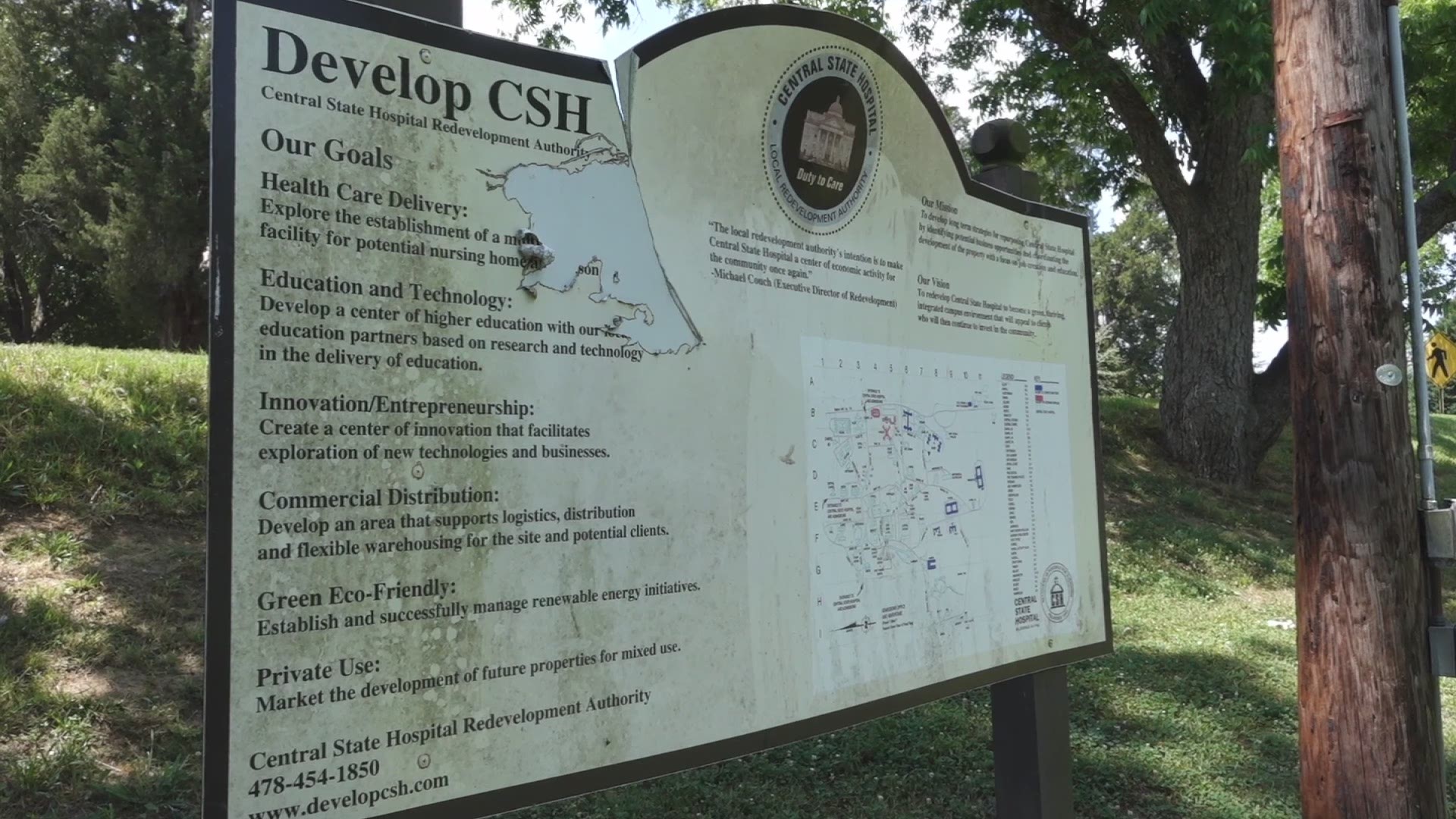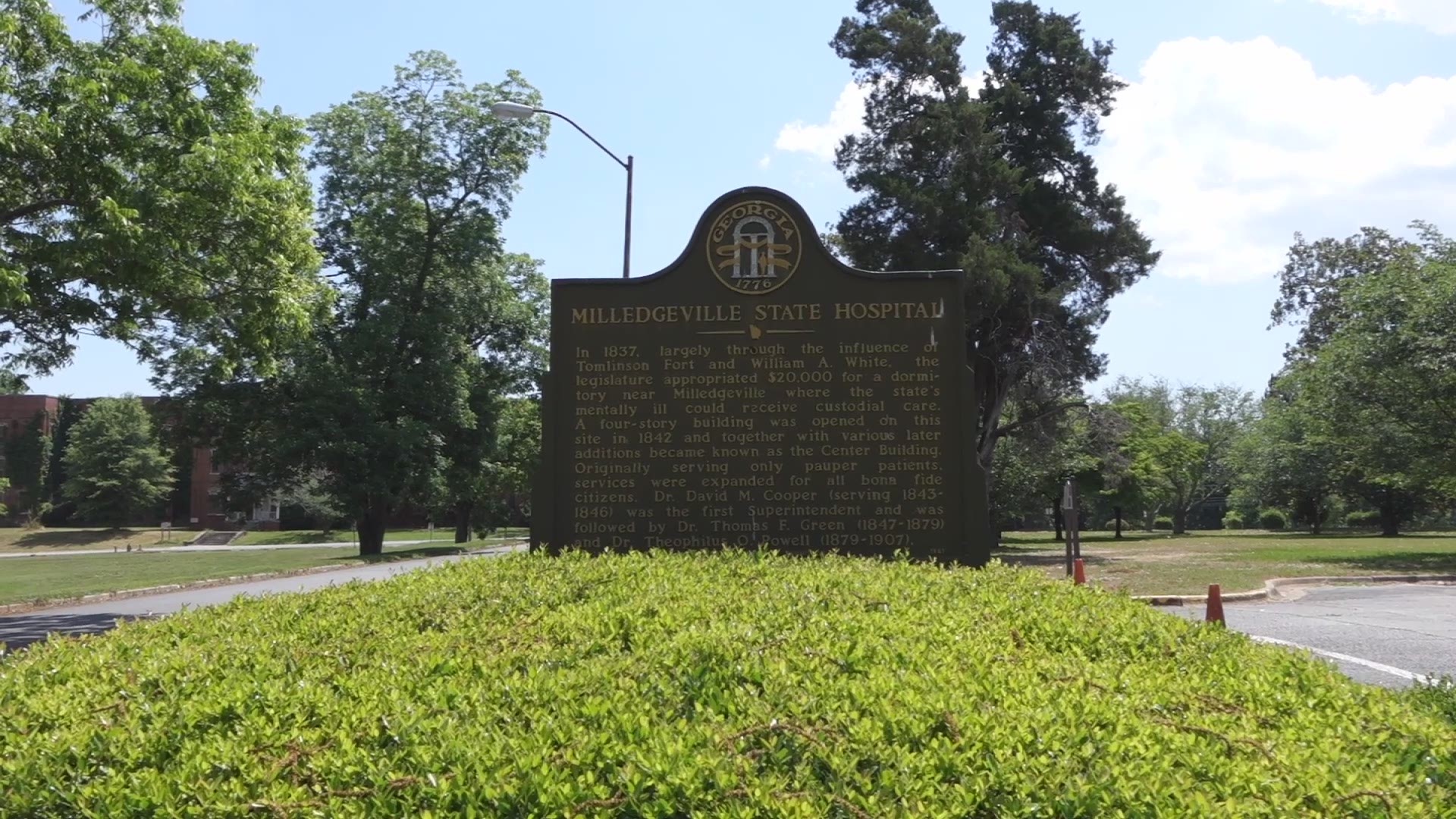MILLEDGEVILLE, Ga. — Renaissance Park in Milledgeville, better known as Central State Hospital, holds a significant amount of history that dates back to the 19th century. Now, the campus is used for a variety of things, and there's still room to grow.
In 1834, when Milledgeville was Georgia's state capitol, the governor asked the state Senate and House to build an asylum.
They passed a law in 1841 to organize a "custodial care facility."
The first buildings for the State Lunatic Asylum were finished in 1842. The first patient arrived from Macon in late 1842, and died six months later.
Under the administration of Dr. Thomas Fitzgerald Green in the 1850s, the facility started to become self-sufficient.
Green created farms, a brick plant, kitchen, laundry, smokehouse, and more. The patients did most of the work.
In the late 1800s, a building project under Dr. Theophilus Orgain Powell. music, picnics, dance, games, theater and more for the patients.
The name was changed to the Georgia State Sanitarium in 1898.
Under Dr. Roger Swint in the 1930s and '40s, occupational therapists were added, as well as live bands, radios, workshops, and beauty shops.
The name changed to the Milledgeville State Hospital in 1929.
In the '30s, insulin shock treatment began being practiced at the hospital. In 1937, the Sterilization Bill was passed, allowing hospitals to sterilize some patients.
In the '40s, electrical shock treatment was introduced.
According to the Annual Report of 1972, the hospital was said to be the second largest mental hospital in the world in the mid-century.
In 1959, journalist Jack Nelson exposed horrible conditions at the hospital. An investigation opened, and the Health Department took steps to improve conditions, according to the National Register of Historic Places.
In the '60s, prisoners were moved into buildings once used as a hospital ward and the hospital opened a kitchen that was said to be the "world's largest."
In 1967, the name was again changed to Central State Hospital.
In 1972, the Executive Reorganization Act created by Governor Jimmy Carter placed facilities under the Department of Human Resources. In 1975, the hospital system included mental health facilities in Atlanta, Augusta, Columbus, Milledgeville, Rome, Savannah and Thomasville.
In 1992, according to the National Register of Historic Places, Central State Hospital ran as the the "second largest combination hospital and prison facility in the nation."
Since then, it's been renamed Renaissance Park. Today, it's comprised of 2,200 acres, with over 200 buildings.
Some of the oldest buildings still on campus are the Walker Building and the Powell Building. The Jones Building is one many in Milledgeville may be familiar with, as some were born there.
Walter Reynolds, Contractor for Central State Hospital Local Redevelopment Authority, is the 4th generation in his family to work with the hospital.
"There's a lot of opportunity for economic development on this campus," Reynolds said.
He says that's something they've been focused on for the past few years, as well as refurbishing old stuff on the campus.
"We try to reuse as much as we can that's already here," he said.
The Central State Hospital museum was closed down in the 2000s, but there is hope for a new museum.
The Old Capitol Museum and Heritage Center purchased the depot on the campus and plan to build a museum in that building that features an exhibit to the hospital.
Reynolds says it's a special place that they hope to keep going.
"It was a place where good, kind-hearted people took care of the most unfortunate individuals in the state of Georgia, the most vulnerable citizens of the state of Georgia, and our mission here is to create new economic opportunities to bring jobs back to Milledgeville," he said.
If you want to see the museum open, Reynolds says the best way to see it done fast is to donate.
If you're looking for more history, you can visit the DBHDD website, or tour the campus. If you want information on a patient, you can request that through he state records office in Morrow.
MORE IN HIDDEN HISTORY


